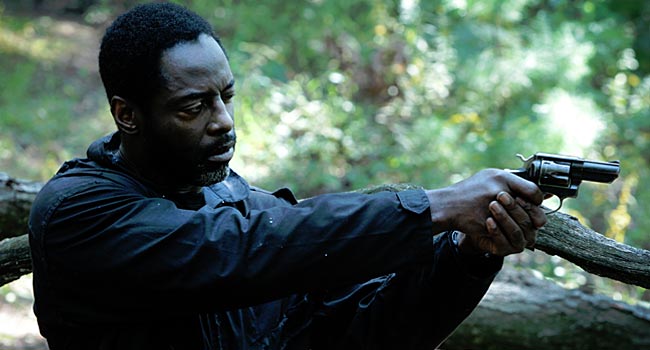
One might wish Moors had exercised more assertiveness, as the message of the movie ultimately feels frustratingly elusive and hollow.

One might wish Moors had exercised more assertiveness, as the message of the movie ultimately feels frustratingly elusive and hollow.
The endeavor of dramatizing the events of something as horrific as the 2002 Washington D.C. killing spree of “The Beltway Snipers”, John Allen Muhammed and his then 17-year-old partner, Lee Malvo, requires a deft hand and a measure of control and restraint typically demonstrated only by the most seasoned of filmmakers, especially if you’re going to examine the infamous killers as intimately as writer-director Alexandre Moors does in his debut feature, Blue Caprice. However, Moors rises to the occasion and navigates the minefield skillfully, shedding light on the twisted psyches of Muhammed and Malvo for clarity’s sake rather than focusing their chilling, monstrous acts, which are handled concisely only near the film’s conclusion. Despite Moors successfully avoiding making any statements that are overtly exploitative or shockingly gruesome, one might wish he’d exercised more assertiveness, as the message of the movie ultimately feels frustratingly elusive and hollow.
We open on the Caribbean island Antigua, bathed in an eerie, murky blue light. The film is shot beautifully; Moors and DP Brian O’Carroll’s use of soft-focus is abundant, giving the film a simultaneously dreamlike and sobering aesthetic, often placing the camera in unexpected spots, slightly to the left or right of where you’d expect it to be. Lee (Tequan Richmond) is abandoned by his mother, the only family he’s got. While aimlessly, dejectedly roaming the island for lack of anything better to do, Lee spots Muhammed (Isaiah Washington), a sharply-dressed American, goofing around on the beach with three children who appear to be his own. He’s genuinely great with the kids, and any malevolence seen in Washington at this point is projected by us, only informed by our knowledge of the film’s gruesome final destination. Muhammed eventually takes Lee under his wing, and in a quietly revealing scene with his children, we learn that he’s brought them to Antigua to escape a losing custody battle (the first true sign of malevolence).
When his children are eventually taken away, Muhammed takes Lee with him back to the U.S. to Tacoma, Washington, where he passes the young boy off as his son and they drift through the evergreen city. Muhammed mooches his way into the home of an ex-fling first, then (after being kicked out due to Muhammed’s general asshole behavior) crashes with an old buddy, Ray (Tim Blake Nelson), and Ray’s wife (Joey Lauren Adams). Ray is a wiseass with an artillery obsession, which introduces the instruments of death into the hands of Lee, who turns out to be an excellent marksman.

Throughout the lengthy middle section of the film, we see Muhammed mold young Lee into a cold killer through twisted, disturbing methods. He ties the young boy to a tree in the rain, forcing him to free himself and walk back to Ray’s. The two violently spar in the forest, sprint through the trees, and hone their shooting skills together, all serving to make Lee more malleable in Muhammed’s hands. The older man eventually convinces the boy to murder people in cold blood in order to demonstrate his love. “It’s not enough to say it,” Muhammed preaches.
Washington’s sinister performance is deliberate and controlled. He speaks economically, without a wasted word, and he’ll rattle your bones with every word of maniacal, anarchistic vitriol he spews into the open ears of Richmond, who puts on an equally impressive effort. The young actor’s role is essentially silent, and he mostly utilizes his body language and expressive eyes to convey the emotions he needs to. The actors work incredibly well in tandem, and every moment they share is more chilling than the last.
With Lee, Muhammed constantly reinforces a philosophy of “us against them”, claiming that “they” took his children away, and that he and the boy need to wage a two-man war on civilization itself and watch the world crumble. They’re alone together, both rejected by their loved ones and driven to madness. Moors’ intent is to illuminate the relationship between the killers, nothing more; there isn’t an iota of sympathy for them to be found in the film, which is wise. Washington and Richmond are appropriately monstrous, and the film plays like a subdued horror movie in many ways, and an absolutely terrifying one at that.
Despite the length and plodding pace of the Tacoma section of the film, in which we watch Muhammed calculatedly indoctrinate Malvo, the boy’s transformation from innocent island orphan to mindless murderer feels surprisingly befuddling and abrupt. It’s more of a senseless jump from child to monster than a clearly plotted evolution. The writing, while otherwise excellent, fumbles in this respect, lacking precision. Richmond is great, though, and holds up his end of the bargain.
The film’s final act—which presents the Washington D.C. killing spree itself—feels tacked-on and unnecessary. The film’s opening montage (comprised of real-life news clips of the shootings) is evidence enough of the cataclysmic results of Muhammed’s rage, and Moors’ focus is clearly aimed at the relationship formed between the two killers, not the killings themselves, so the reenactment of the massacre feels like an afterthought. Moors exercises taste by not sensationalizing the violence or playing it for shock value, but refraining from showing the murders entirely would have been much, much more tasteful.